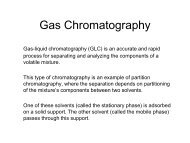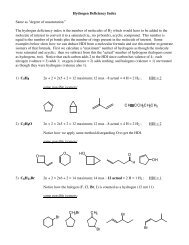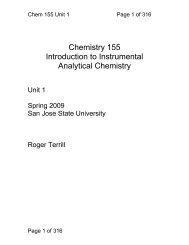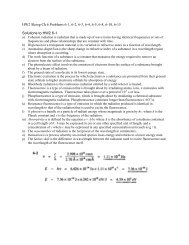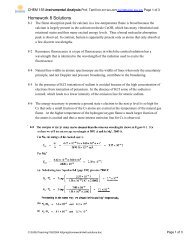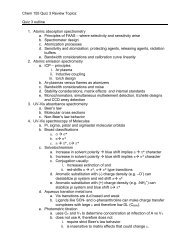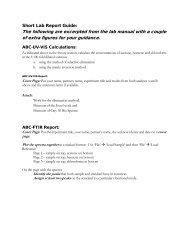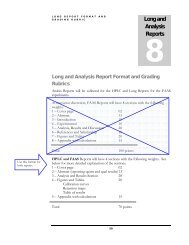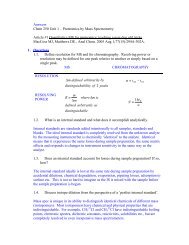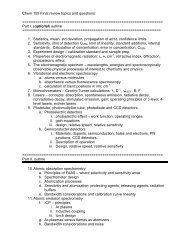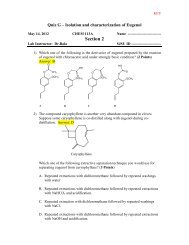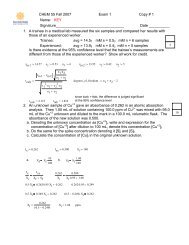Chemistry 155 Introduction to Instrumental Analytical Chemistry
Chemistry 155 Introduction to Instrumental Analytical Chemistry
Chemistry 155 Introduction to Instrumental Analytical Chemistry
Create successful ePaper yourself
Turn your PDF publications into a flip-book with our unique Google optimized e-Paper software.
Chem <strong>155</strong> Unit 2 Page 62 of 313Obviously, the answer has <strong>to</strong> do with the way that the dependentvariable (A) in this case changes as a function of the independentvariable (P).Consider a calculated value ‘S’ that depends on the measuredquantites, e.g. instrument signals, a,b,c…S = f(a,b,c…)In fact – the variance in S is proportional <strong>to</strong> the variance in a,b,c –and the proportionality is the partial derivative squared:(Skoog appendix a1B-4 has a derivation if you are curious)for: S f( a±σ a , b±σ b , c±σ c )σ S2⎛⎜⎝δSδa⎞ ⎟⎠2⋅σ a2+⎛⎜⎝δSδb⎞ ⎟⎠2⋅σ b2+⎛⎜⎝δSδc⎞ ⎟⎠2⋅σ c2So – let’s take an example:S = a+b-cfind σ S = f(S,a,σ a , b,σ b ,c,σ c )Note that the larger terms dominate!Page 62 of 313



